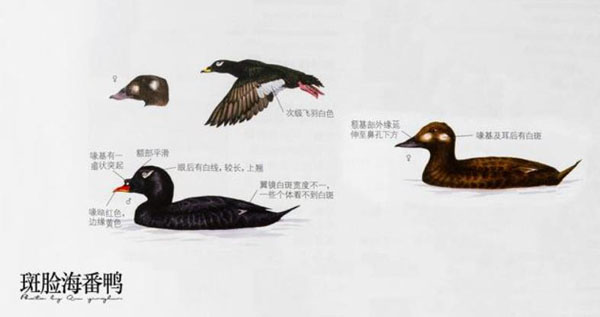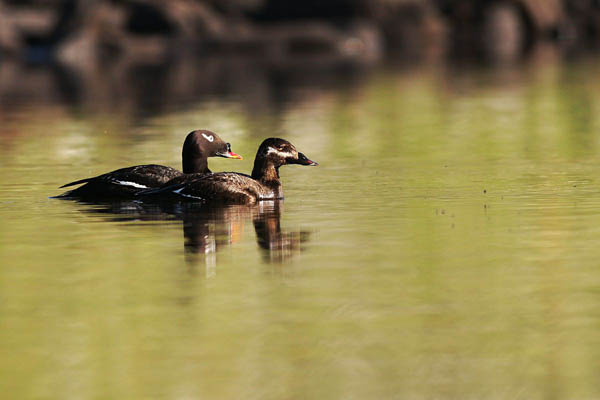Melanitta fusca
IUCN
LCBasic Information
Scientific classification
- name:Melanitta fusca
- Scientific Name:Strange-billed duck, Scoter,Melanitta fusca,White-winged Scoter,Velvet Scoter
- Outline:Waterfowl
- Family:Anseriformes Anatidae Scutellaria
Vital signs
- length:51-58cm
- Weight:1100--2000g
- lifetime:13years
Feature
All black, love diving
Distribution and Habitat
In China, it winters in the eastern and southeastern coastal areas and inland lakes in the middle and lower reaches of the Yangtze River, as far south as Hong Kong. Stray birds are seen in Beijing and Sichuan. Abroad, it breeds in central and eastern Siberia, Alaska and northern Canada, and winters in the eastern coast of North America, the northeastern and northwest coasts of the Pacific Ocean.
The spotted-faced sea duck is active in glacial lakes, coastal beaches, inland freshwater rivers and lakes and marshland areas in the northern mountains in spring and summer. It nests in the tundra. In winter, it lingers in lakes and rivers or seeks shelter on the edge of the ocean coast.
Appearance
A medium-sized sea duck. The male is black with a purple sheen, with a half-moon-shaped white spot behind the eye, a black tumor at the base of the beak, white wing mirrors, and a white diagonal stripe when perched. The female is dark brown, with an oval white spot at the base of the beak and before and after the ears, and white wing mirrors. The iris is red, the male's beak is orange-red, the female's is gray-black, and the feet are orange-red.
Details
The Spotted-faced Muscovy is a medium-sized, dark, short, flat sea duck. It belongs to the diving duck family. It can dive underwater for considerable distances, up to 5 to 10 meters deep, sometimes even more. It likes to gather in groups, often flying in small groups, generally migrating short distances, and not wintering in frozen waters. In Europe, it appears in the North Sea, the English Channel, and the northern Atlantic coast along the Baltic Sea. It also appears in the eastern Mediterranean, especially the Black Sea. It has strong flying ability and flaps its wings relatively slowly.

Active during the day. Except for the breeding season, they often move in groups, especially during migration and winter, often forming large groups, and occasionally single individuals are seen. When swimming, the tail is tilted upward, and when diving, the wings are slightly spread, and they often dive frequently.

The spotted-faced sea duck mainly hunts by diving. The food is mainly fish, aquatic insects, crustaceans, shellfish, mollusks and other animal food, and also eats pondweed and other aquatic plants. Foraging is mainly during the day, and almost all of the day is spent diving for prey. Relatively quiet. The male bird screams loudly when courting, and the female bird makes a heavy karrr sound. It mainly feeds on animal-derived food.

The spotted-faced scops duck usually reaches sexual maturity at the age of two. Pairs are formed mainly on the way during the late winter and spring migration, and they are basically paired when they arrive at the breeding grounds. The breeding season is from May to July. Usually nests are built on grasslands with low trees or shrubs, generally not far from lakes, ponds and rivers, and some are 2-3 kilometers away from water bodies. The nest is made of hay and down feathers. Each nest lays 6-10 eggs. The eggs are milky white or leathery yellow, with a size of 64-77×45-52 mm, an average of 71×48 mm, and weigh 92 grams. The female incubates the eggs. The male leaves the female after she begins incubating the eggs and goes to the molting ground with other males to molt. The incubation period is 26-29 days. The chicks mature early and can follow their parents soon after hatching. After about 60-80 days of chick life, the chicks are able to fly.








